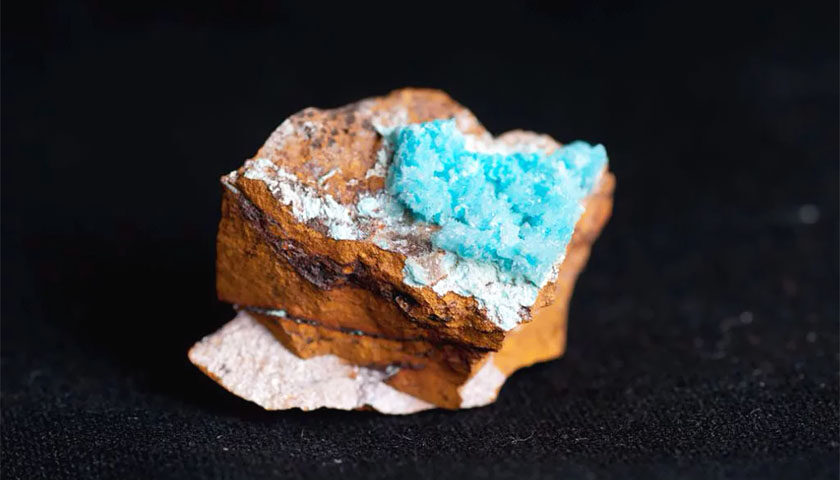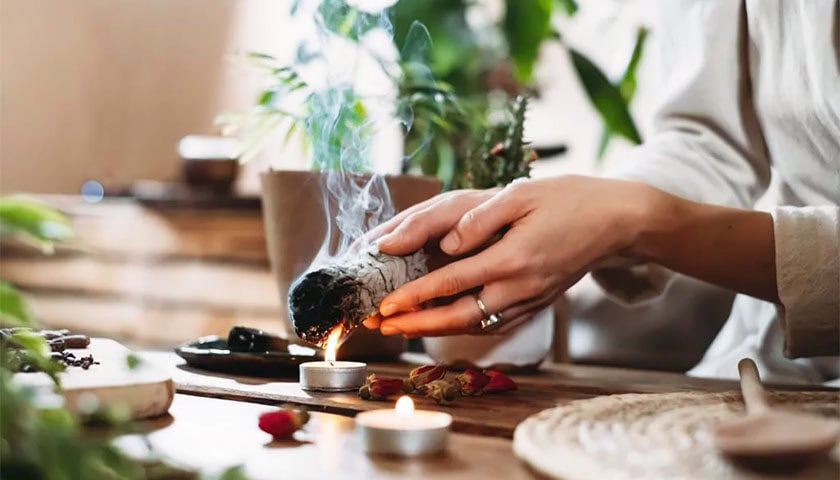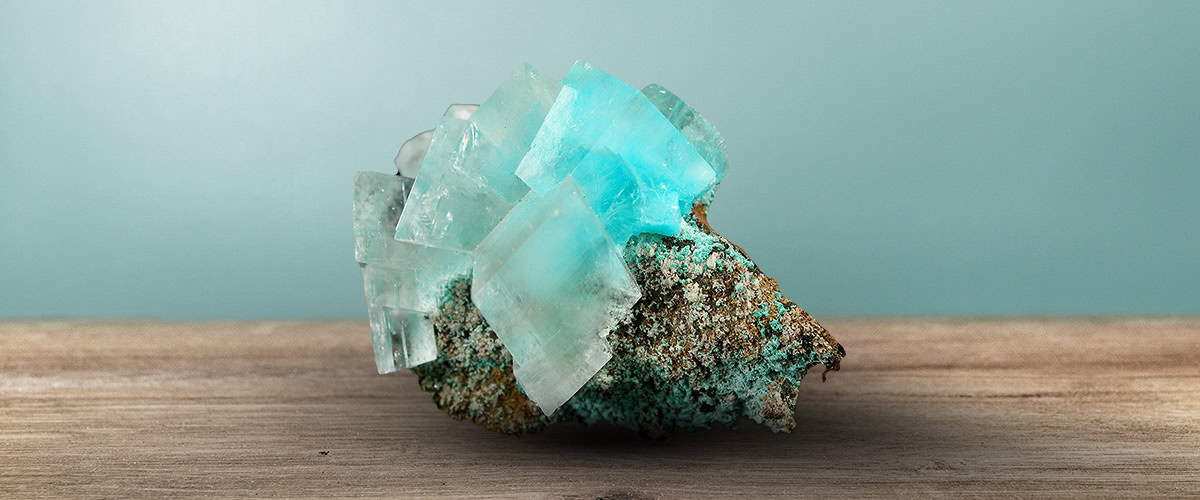Article Highlights
- Aurichalcite is a striking carbonate mineral found typically in copper and zinc deposits.
- This mineral was named after the legendary ‘mountain copper’ from the Greek legend of Atlantis.
- It exhibits prismatic crystals with a monoclinic crystal system.
- The color of aurichalcite is chiefly given by copper, resulting in enchanting green-blue hues.
The Intriguing Formation of Aurichalcite
Now, just imagine the deep recesses of the earth, where the process of mineral formation is underway. You’ll find aurichalcite in these hidden realms, often as a secondary mineral within copper and zinc deposits. Thanks to the presence of copper in its chemical structure, aurichalcite exhibits enticing green-blue colors, making it a captivating specimen for mineral collectors and enthusiasts alike.
The ratio of zinc to copper in aurichalcite is roughly 5:4. It’s this delicate balance between zinc and copper, two elements with their unique properties, that gifts aurichalcite with its fascinating attributes.
Aurichalcite’s Geological Buddies

As you’d expect, aurichalcite doesn’t exist in isolation. It’s usually found in the company of other minerals like rosasite, smithsonite, hemimorphite, hydrozincite, malachite, and azurite, contributing to a dazzling display of geological beauty. Each of these minerals has its own allure, yet together they create an irresistible medley of textures, forms, and colors that can only be found in the oxidized zones of copper and zinc deposits.
A Peek into Aurichalcite’s History
Now, let’s take a step back in time, all the way to 1839. This was when Bottger first described aurichalcite and gifted it a name that’s as intriguing as the mineral itself. He chose to call it ‘aurichalcite’ from the Greek word όρειχαλκος, which translates to “mountain brass” or “mountain copper”. This word brings to mind the mythical metal orichalcum, associated with the fabled lost continent of Atlantis.
The mineral’s type locality, the place where it was first identified, is the Loktevskoye Mine, located in Western Siberia, Russia. This geographical link gives aurichalcite a hint of the exotic, a captivating tale of its origins rooted in a distant landscape, adding to its charm.
The Charm of Aurichalcite Crystallography

Aurichalcite’s charisma is amplified by its crystal structure. This mineral displays prismatic crystals, often forming encrustations or columnar structures that evoke a sense of architectural grandeur on a microscopic scale. Belonging to the monoclinic crystal system, these formations present a dazzling complexity in their symmetry and spatial relations, entrancing mineral enthusiasts and geologists alike.
Aurichalcite Meaning and Symbolism

Dive into the captivating world of aurichalcite, a mineral with profound symbolic value, and let it tell its tale. Close your eyes and picture its enchanting green-blue hues, gifted by the presence of copper, whispering stories of the deep, hidden realms of the Earth.
Aurichalcite, often found as a secondary mineral in copper and zinc deposits, resonates with the symbolism of transformation. Just as it’s birthed through the metamorphosis of its parent minerals, it embodies the spirit of change and progression. Envision this mineral as your beacon during times of transition, inspiring you to evolve and adapt with grace.
Imagine its prismatic crystals, with their architectural grandeur on a microscopic scale, as a symbol of structure and stability. The mineral’s monoclinic crystal system gives it a sense of balance and symmetry, a quiet reminder of the need for harmony and equilibrium in our lives.
Finally, aurichalcite carries the legend of its name, rooted in the mythical metal orichalcum, associated with the fabled lost continent of Atlantis. Picture the ancient legends, the mysteries, the sense of adventure it symbolizes, and let this awaken your inner explorer.
Aurichalcite Metaphysical Properties

- Aurichalcite, with its captivating green-blue hues, is believed to have potent metaphysical properties.
- This mineral is often associated with soothing energy, emotional healing, and spiritual growth.
- It’s also believed to stimulate the throat and heart chakras, encouraging open and clear communication.
A Glimpse into Aurichalcite’s Metaphysical World
Close your eyes and imagine aurichalcite, its stunning green-blue colors shimmering in the light. Think of it as a tiny chunk of Earth’s heart, resonating with an energy that’s ancient and wise. Now, what if I told you that this beautiful mineral holds more than just geological charm? You see, the metaphysical world sees aurichalcite as a gem packed with powerful, soothing energy.
A Companion for Emotional Healing
Believed to vibrate at a frequency that brings tranquility, aurichalcite is often considered a balm for the soul. Its soft, calming energy is thought to aid emotional healing, helping to ease worries and instill a sense of peace. Picture those times when life feels a tad too overwhelming, and imagine the soothing touch of aurichalcite helping you navigate through the storm.
Gateway to Spiritual Growth
Aurichalcite is also seen as a facilitator of spiritual growth. Its energy might help connect you to your higher consciousness, encouraging introspection and personal evolution. Picture this gem as a spiritual guide, nudging you to delve deeper into your inner realms, to uncover truths about yourself and the universe.
A Stimulant for the Throat and Heart Chakras
Now, imagine aurichalcite’s energy gently resonating with your throat and heart chakras. It’s believed to encourage open and clear communication, helping you express your feelings with confidence and clarity. As it works on your heart chakra, it might inspire empathy, compassion, and unconditional love. Envision this mineral as a key, unlocking the doors to these vital energy centers, inviting a flow of positive vibes into your life.
Aurichalcite vs Azurite
Picture a stunning green-blue aurichalcite next to an azurite with its rich, royal blue color. Both have their roots in copper deposits, yet they exhibit distinct characteristics.
Aurichalcite, with its (Zn,Cu)₅(CO₃)₂(OH)₆ formula, is a secondary mineral often found in oxidized zones of copper and zinc deposits. Azurite, on the other hand, bears a chemical formula of Cu₃(CO₃)₂(OH)₂, mostly found in the weathered upper zones of copper ore bodies.
Azurite, sometimes called “Stone of Heaven,” was revered in ancient Egypt, where it was used for creating dazzling blue pigments. Meanwhile, aurichalcite, with its origin story linked to the Greek myth of Atlantis, captivates with its own tale.
As far as their uses are concerned, azurite holds the edge due to its ornamental and industrial applications, while aurichalcite primarily captivates the mineral enthusiasts and collectors. An azurite specimen can fetch anywhere from $10 to $1000 based on its quality, while aurichalcite, being less well-known, usually ranges from $5 to $200.
Aurichalcite vs Malachite
Now, compare aurichalcite with malachite, another copper carbonate mineral known for its vibrant green bands. Their chemical structures differ, with malachite’s formula being Cu₂CO₃(OH)₂.
Malachite has been used since ancient times for its beauty and perceived protective qualities. It’s often used in jewelry and decorative items, while aurichalcite is more of a collector’s item due to its more delicate nature.
Both minerals can be found together in oxidized copper deposits, yet malachite’s intense green color makes it more easily recognizable. A piece of malachite jewelry can cost between $10 to over $1000, while aurichalcite specimens typically cost between $5 and $200.
Aurichalcite vs Rosasite
When comparing aurichalcite with rosasite, you’re looking at two siblings, both secondary minerals in oxidized zinc and copper deposits. They share a common element, copper, in their chemical structures, yet rosasite is more uniformly blue compared to the green-blue hues of aurichalcite.
Rosasite is less common in jewelry due to its softness but is cherished among collectors. Prices for rosasite specimens typically range from $10 to $500, overlapping slightly with aurichalcite’s price range.
Aurichalcite vs Chrysocolla
Against the backdrop of chrysocolla’s vibrant blue-green color, aurichalcite seems softer and more subtle. Although both are secondary minerals in copper deposits, chrysocolla (Cu,Al)₂H₂Si₂O₅(OH)₄·nH₂O is silicate-based, unlike the carbonate-based aurichalcite.
Chrysocolla was named by Theophrastus, a Greek philosopher and botanist, in 315 BCE. Its vibrant color led to its use in jewelry and decorative items. As a more recognized gemstone, chrysocolla is often more expensive, ranging from $10 to over $1000, compared to aurichalcite’s $5 to $200 range.
Aurichalcite vs Dioptase
When viewed side by side with dioptase, aurichalcite appears more muted and subtle. Despite sharing copper in their chemistry, dioptase’s formula is CuSiO₃·H₂O, making it a silicate, unlike the carbonate-based aurichalcite.
Dioptase’s vibrant emerald-green crystals often make it mistaken for emeralds. The beautiful deep green gem can fetch between $20 to over $1000, generally commanding higher prices than aurichalcite.
Aurichalcite vs Shattuckite
The last comparison is with shattuckite, another copper silicate mineral. Shattuckite’s formula is Cu₅(SiO₃)₄(OH)₂, differing significantly from aurichalcite’s carbonate structure.
With its bright blue color, shattuckite is often used in jewelry and decorative pieces. It’s named after the Shattuck Mine in Bisbee, Arizona, where it was first discovered. Shattuckite is typically more expensive, ranging from $20 to over $1000, compared to aurichalcite.
Through these comparisons, it’s clear that while aurichalcite may not be the most well-known or priciest gem, it carries a unique charm and intrigue of its own.
Frequently Asked Questions About Aurichalcite
What is aurichalcite?
Aurichalcite is a secondary mineral typically found in the oxidized zone of copper and zinc deposits.
What is the chemical formula of aurichalcite?
The chemical formula of aurichalcite is (Zn,Cu)5(CO3)2(OH)6.
What colors does aurichalcite display?
Aurichalcite usually displays beautiful green-blue colors.
Where does aurichalcite occur?
Aurichalcite is generally found in the oxidized zone of copper and zinc deposits.
What minerals is aurichalcite associated with?
Aurichalcite is often associated with rosasite, smithsonite, hemimorphite, hydrozincite, malachite, and azurite.
How did aurichalcite get its name?
Aurichalcite is named after the Greek term for “mountain brass” or “mountain copper”, in reference to its zinc and copper content.
What is the type locality of aurichalcite?
The type locality is the Loktevskoye Mine in Western Siberia, Russia.
What crystal system does aurichalcite belong to?
Aurichalcite belongs to the monoclinic crystal system.
What is the hardness of aurichalcite?
Aurichalcite is quite soft with a Mohs hardness of only 2.
Can aurichalcite be used in jewelry?
Due to its softness and delicate nature, aurichalcite is not typically used in jewelry.
What is the price range of aurichalcite?
The price of aurichalcite can range from $5 to $200, depending on the quality and size of the specimen.
Is aurichalcite toxic?
While not directly toxic, aurichalcite contains copper and zinc, which can be harmful if ingested or inhaled. Always wash your hands after handling.
How rare is aurichalcite?
While not considered a rare mineral, high-quality specimens of aurichalcite can be quite sought after.
Is aurichalcite fluorescent?
Aurichalcite is known to fluoresce under UV light, typically producing a greenish glow.
What are the notable localities for aurichalcite?
Notable localities include the type locality in Russia, as well as Mexico, Namibia, and the U.S. (especially Arizona).
Can aurichalcite change color over time?
Yes, aurichalcite can darken upon prolonged exposure to light due to its photosensitive nature.
Is aurichalcite soluble in water?
No, aurichalcite is not soluble in water.
How is aurichalcite formed?
Aurichalcite is a secondary mineral that forms in the oxidized portions of zinc and copper deposits, often from the alteration of other minerals.
| Aurichalcite Physical Properties | |
|---|---|
| Crystal Structure | Monoclinic |
| Mineral Class | Carbonate |
| Specific Gravity | Approximately 3.9 |
| Formula | (Zn,Cu)5(CO3)2(OH)6 |
| Hardness | 2 on the Mohs scale |
| Transparency | Transparent to Translucent |
| Chemical Composition | Zinc Copper Carbonate Hydroxide |
| Locations | Russia, USA, Mexico, Namibia |
| Rarity | Uncommon |
| Can Be Submerged in Water | Yes, but prolonged exposure not recommended |
| Sun Safe Crystal | No, can darken over time |
| Special Care Instructions | Handle with care, avoid bright light |
| Price | Generally ranges from $5 to $200 |
| Aurichalcite Metaphysical Properties | |
|---|---|
| Chakras | Throat, Heart |
| Zodiac Signs | Aquarius, Capricorn |
| Planets | Venus, Neptune |
| Numerical Vibration | 2 |
| Elements | Earth, Air |
| Symbolism | Peace, Communication |
| Birthstones | Not traditionally used |
| Affirmations | “I speak my truth with ease and clarity.” |
| Emotional Conditions | Stress, Anxiety, Fear |
| Spiritual Purposes | Meditation, Connection to Higher Self |



